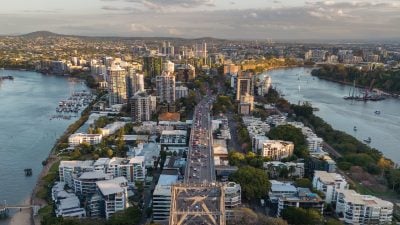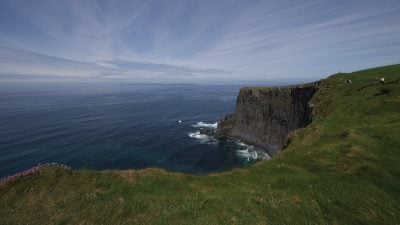Home / UK & Europe / Discover a New and Exciting Eu…

Discover a New and Exciting European Destination With a Croatia Vacation
The word is out. The next major sought after European destination, rising in popularity, has to be Croatia. Find out why, and then strongly consider a Croatia vacation.
When people started travelling to Europe in large numbers and when it came to looking for a country that could provide overall good weather, beaches, history, culture and cultural delights, France, Italy, Spain, and Greece were usually the destinations of choice. However, today, alternative destinations are developing fast. One of those destinations is Croatia… and deservedly so.
Why Visit Croatia?
Why travel to Croatia? Well, it has an amazingly long and beautiful coastline, some 5800 kilometres/ 3600 miles of it in fact. This adds up to an abundance of great resorts to visit for a Croatia beach vacation. When it comes to weather, Croatia is a winner again. It has a Mediterranean climate, which means mild winters and perfect spring and summer seasons, plus the sun shines incessantly. Alfred Hitchcock once said, “Zadar has the most beautiful sunsets in the world.” The coastline doesn’t just have beaches, it also offers a background of stunning scenery along its rocky, indented shoreline. Another feature is the over 1000 islands dotted around the coastline, of which 50 are inhabited.
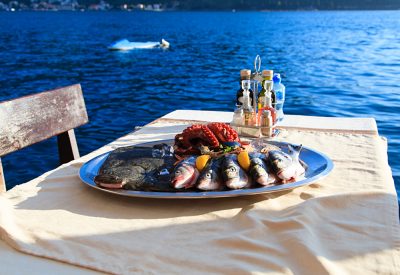
As for culture, many of these coastal cities and towns have a rich history dating back to Roman and Venetian times. As a result, if interested in Roman sites or medieval architecture, you will find plenty to enjoy. Croatia’s rich cultural heritage can also be experienced in its numerous museums, galleries and churches. As for food, being by the sea, you can expect fresh seafood. You can certainly enjoy local Croatian dishes but you can also find an Italian influence in the style of cuisine. The wine industry in Croatia is constantly improving, and there are some excellent red and white wines to be sipped.
Where to Head to in Croatia
Zagreb, Croatia’s Capital
Although not on the coast, Zagreb is well worth spending time in. It offers visitors pleasant walks through its many parks and pedestrian-only areas. The centre has two interesting parts. There is Upper Town, as it is known, which is the historical area dating back 1,000 years with charming medieval buildings, cobblestone streets, and baroque churches. Lower Town is where you will find shops, restaurants, cafes and bars plus an antiques market and fruit and vegetable market held daily here. In the city, there are many interesting museums and art galleries. One of my favourites is the Museum of Broken Relationships which is dedicated to romantic liaisons that have failed – exhibited through letters, memorabilia, and photographs – all submitted from jilted lovers around the world. Another favourite place of mine is Strossmayer’s Walkway in Upper Town, where you have great views of the city below and it is where, in the summer, you will find painters, musicians, and other artists offering performances and concerts.
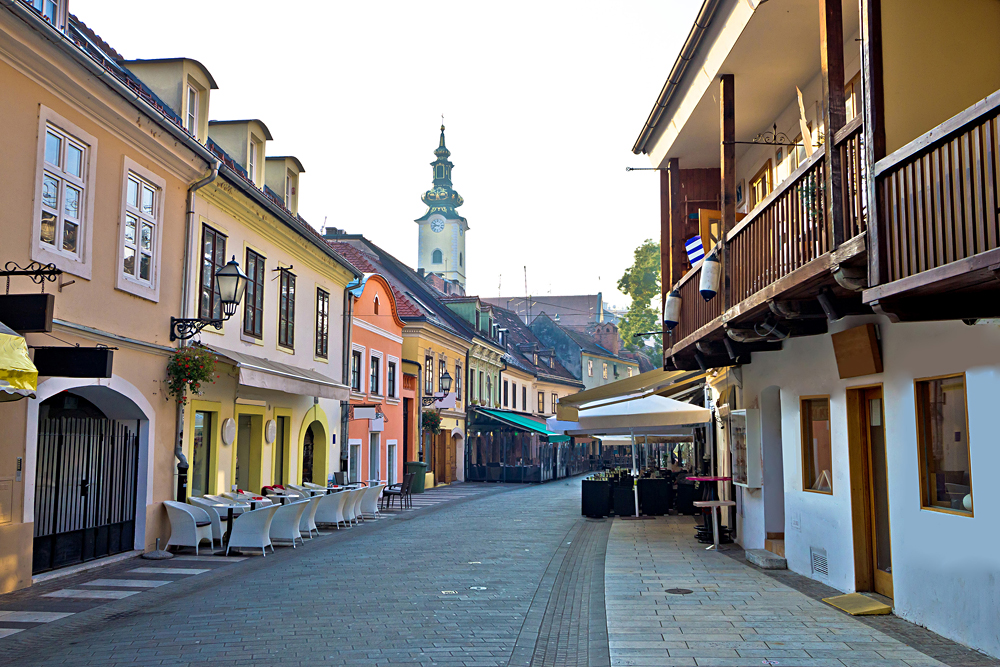
Dubrovnik, “Pearl of the Adriatic”
It was the English poet, Lord Byron who called Dubrovnik “The Pearl of the Adriatic.” There is no doubt this is the best known resort you’ll discover on your Croatia vacation. It is renowned for being one of the world’s best preserved medieval walled cities. Within its walls, you will find beautiful churches, monasteries, and museums. It was the greatest rival to Venice between the 14th and 19th century, and thrived as an independent republic. Inside the walls, the old town is a maze of tiny narrow atmospheric streets all of which are pedestrianized. Prominent is the 12th century Baroque-style cathedral. It is possible to walk completely around the old town along the ramparts of the wall for 2 kilometres/1.2 miles, while looking at a sea of orange rooftops. Just beyond the walls, you can take a cable car from the old town to Srd, a hill on top of which, you can have amazing views of the surrounding region. For a Croatian beach vacation, Dubrovnik also has beaches stretching to the north and south of the old part. The best known are Lapad Beach, Banje Beach, and one which, in fact, is called Copacabana Beach. From Dubrovnik, you can take boat rides to some of the nearby island resorts such as Mljet and Korcula (more on these places later).
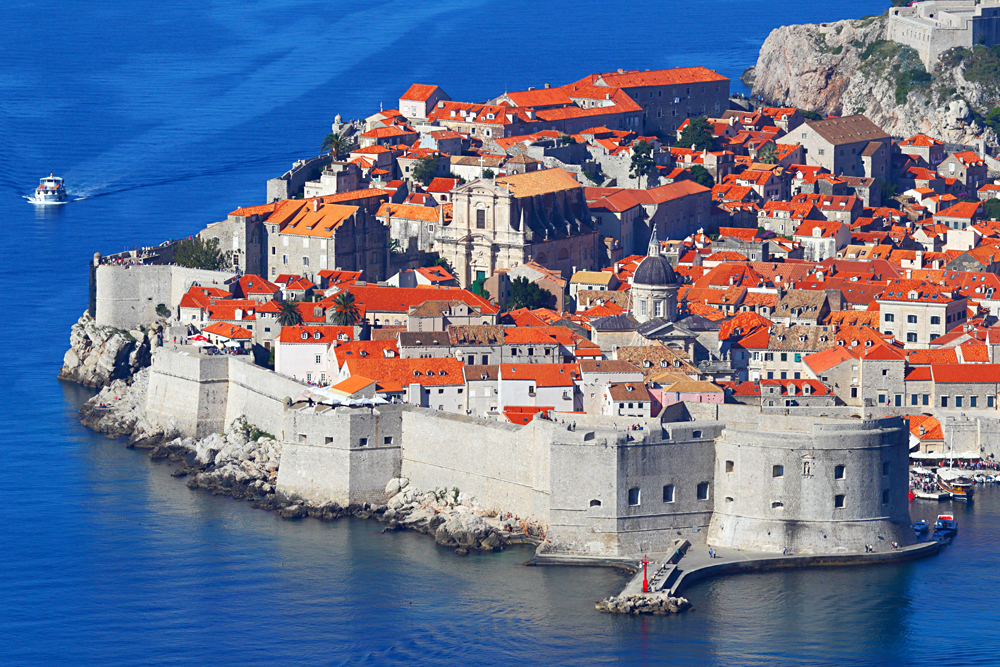
Split and Its Famous Palace Complex
Split is the second largest city in Croatia and the largest city on the Adriatic coast. It is dominated by the enormous Diocletian’s Palace complex, the most important sight in Split. In 295 AD, Roman Emperor Diocletian ordered this to be built as a residence for his retirement. Today, these ruins are some of the most valuable surviving buildings of the Roman era on the Adriatic coast, and the largest Roman palace ever built. The ancient palace/fortress is now what I would describe as a city within a city – with numerous shops, cafes, restaurants, and also apartments located in the old buildings on the narrow streets. The centre of activity is the main square called the Peristyle. In the palace are antiques which include three 3500-year old sphinxes brought to Split from Egypt for the Emperor. Although primarily not a beach resort, there are beaches in Split. Most of them are south-east of Split’s harbour. Bacvice Beach is at the beginning of a 10 kilometre/6 mile stretch of coastline, offering a large selection of beach resorts.
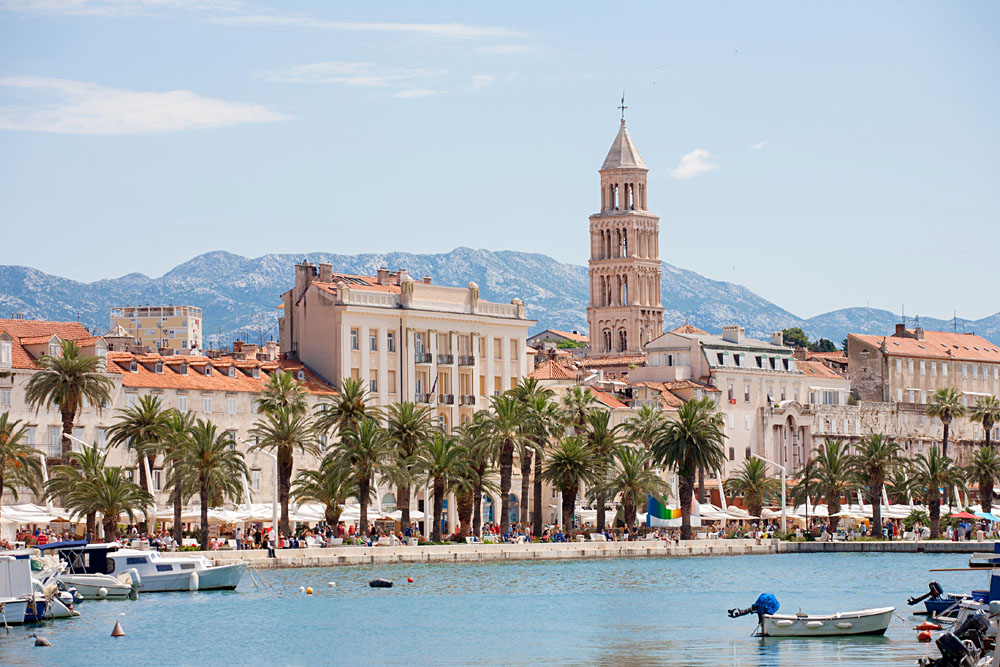
The Party Island of Hvar
Hvar has earned the reputation as the country’s premier party town if considering a Croatia vacation. During the tourist season, the port is filled with large yachts, while the all-night discotheques attract young visitors. But that’s not all that is attractive about Hvar. The island is 68 kilometres/42 miles long and its hillsides are covered with pine forests, vineyards, olive groves, fruit orchards, and lavender fields. Hvar is often called “The Island of Lavender.” Hvar Town is surrounded by 13th Century walls inside of which are several beautiful Gothic palaces and pedestrian streets. You can enjoy the livelier aspects of Hvar certainly but you can also explore the sights as well as swim at one of the numerous beaches. Hvar is also one of the two most famous wine-making regions in Croatia, famous for both red and white wines.
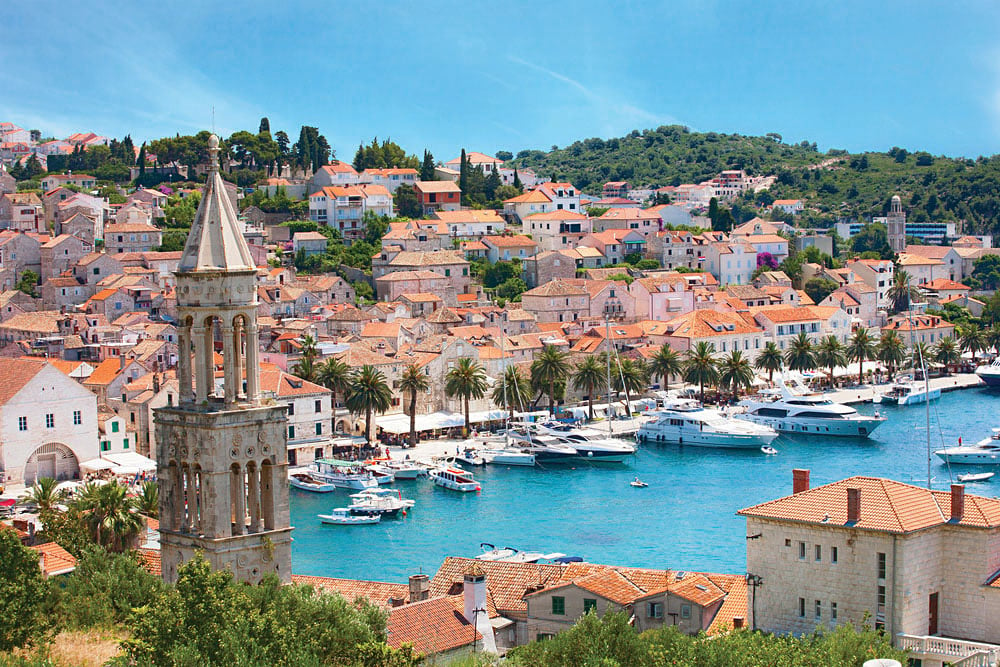
The Enchanting and Lush Island of Mljet
Mljet is 37 kilometres/23 miles from Dubrovnik and is reached by ferry from there. Over 2/3 of the island is covered in forest and half of it is a national park. The rest is dotted with fields, vineyards, and small villages. Mljet has been described as an unspoilt oasis of tranquility, with its lush landscapes and pine forests. The island is considered to be one of the most beautiful of all Croatian islands. It is Croatia’s greenest island with a clear and clean blue sea and sandy shoreline. It is rich in underwater marine life and therefore an excellent place for scuba diving, enhanced by the crystal-clear water. There are numerous small pebble beaches and swimming spots around the island. The only sandy beaches are at Saplunara, which is very quiet and undisturbed. One major attraction on the island is Mljet National Park, which covers the western half and is very scenic with its two attractive saltwater lakes. The park is pretty well untouched, although the two villages here attract many visitors in season, with their lakeside beaches and ancient historical sites.

Timeless Korcula
Korcula is an island which is generally reached by ferry from Split. It is 47 kilometres/29 miles in length and its beaches are some of the best you’ll find on your Croatia vacation. With a very long and varied coastline, Korcula offers a wide range of beaches, some rocky, some sandy and some just pebble. Lumbarda is a small fisherman’s village in close proximity to the two sandy beaches on the island, Vela Przina and Bilin Zal. Racisce is another fishing village with nearby attractive swimming facilities. Pupnat is an old settlement but is known for the most beautiful pebble beach on Korcula, Pupnatska Luka. There are several other equally good beach areas elsewhere on the island. Historical, fortified Korcula Town is known as “Little Dubrovnik,” given its medieval squares, churches, and palaces. Many traditional activities take place on Korcula including traditional folk music and dancing.

Elegant Opatija
During the reign of the Hapsburgs in the 19th century, Opatija was a chic resort where nobility and the aristocracy came to relax. One of their legacies is the belle-epoque villas dotted around. There are also grand spa hotels and excellent restaurants. The illuminated 12 kilometre/7 mile long coastal promenade known as the “Lungomare” has well-kept beaches and provides a stunning backdrop for the villas and hotels that cater to the many visitors. The Villa Angiolina, built in 1844, is a major landmark. It is a remarkable 19th century building surrounded by a park and receives many visitors daily. Opatija is a vibrant resort that hosts many cultural and entertainment events. During the first half of July there is an event during which the streets, terraces, and coffee houses are filled with period costumes, music, and dancing – recalling the times when Opatija was a fashionable venue for the aristocracy of the Austro-Hungarian Empire.

Colourful Rovinj
Rovinj is one of the most beautiful towns in Croatia. It can actually be reached by ferry from Venice, Italy in 2 hours. It is located on a peninsula with high cliffs and coastal islands on which are to be found beaches and hotels. Rocky headlands and coves with sand and pebble beaches are spread along the coastline. The old town, surrounded by wooded hills, has a number of interesting sights with its steep cobbled streets and lovely piazzas offering a wide selection of bars, shops, and restaurants. St. Euphemia Cathedral is an imposing Baroque-style church with a bell tower and which dominates the old town from its hilltop location. There is a street called Grisia, known as Rovinj’s Montmartre, due to its many art galleries. Nearby are a number of beach resorts close to the town.
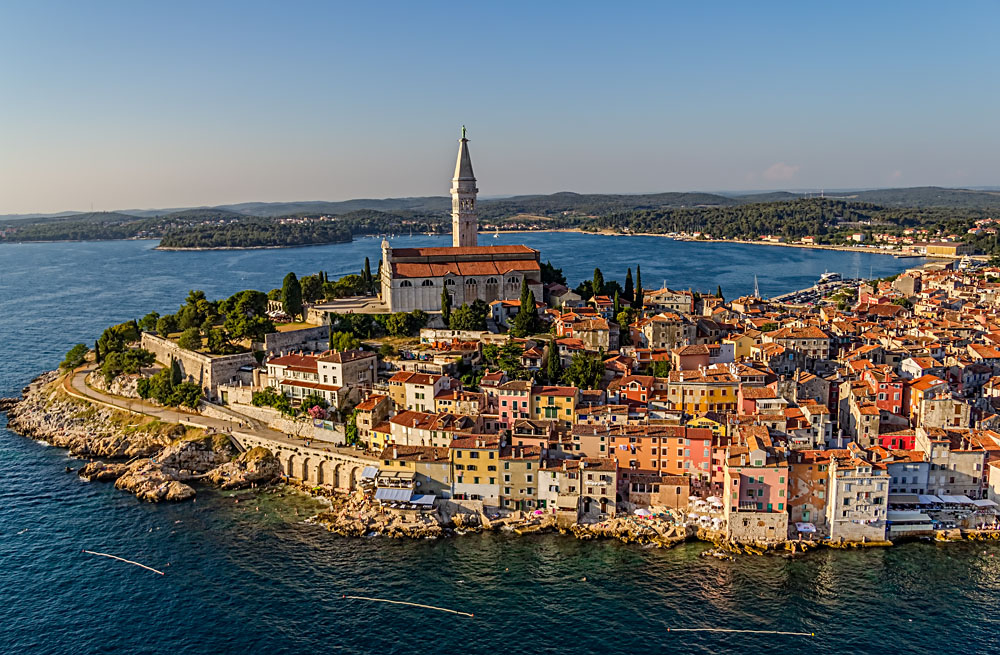
Historical Pula
To travel to Croatia for history and culture, consider Pula, best known for its many surviving ancient Roman buildings. The most famous is its magnificent 1st Century AD Amphitheatre which overlooks the harbour. It is one of the six largest surviving Roman arenas in the world and also one of the best preserved. From time to time, with a 20,000 seating capacity, gladiator shows are held with mock fights. The city’s old quarter of narrow streets is lined with medieval and renaissance buildings. The Roman Forum, constructed in the 1st Century BC, is the main square in the centre of the city and contains the City Hall, built in the 10th century. There are numerous other ancient sites such as the Temple of Roma and Augustus, the Twin Gates, one of the few remaining gates after the city walls were pulled down at the beginning of the 19th century, and the Gate of Hercules, dating back to the 1st century AD. There are also numerous interesting churches and monasteries to visit. Not far from Pula are a number of beach areas dotted with pine groves which offer good restaurants and cafes.
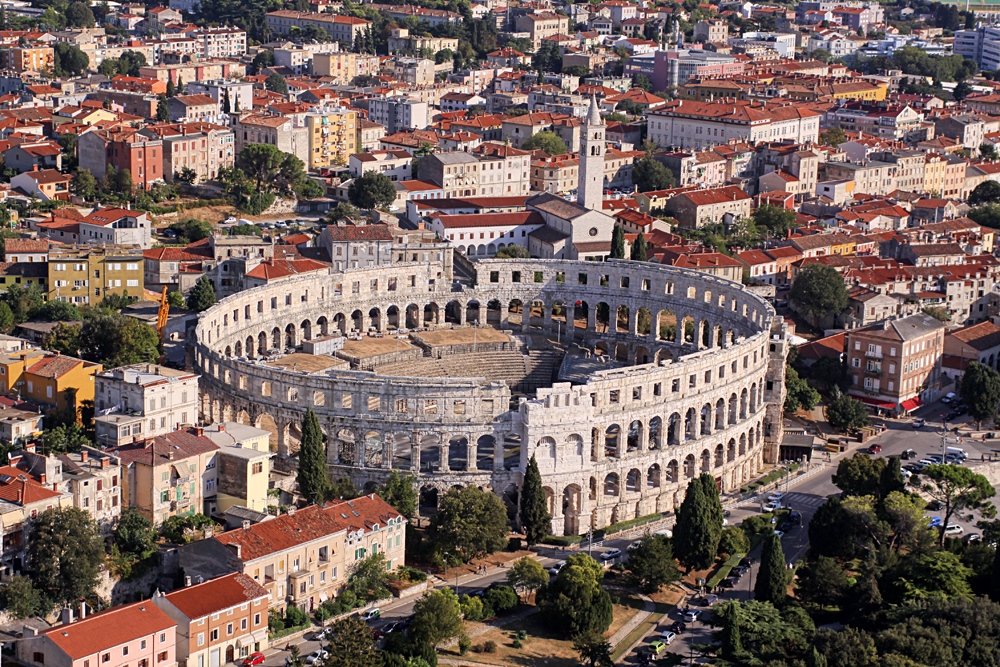
Intriguing Zadar
Zadar is the perfect alternative to Dubrovnik, the oldest continuously inhabited city in Croatia. Although smaller in size and situated on a peninsula, it has many attractions which include a historic old town with Roman ruins, medieval churches, cosmopolitan cafes, and quality museums and art galleries. While on your Croatia vacation, you will find that it is not overrun with tourists. Kalelarga, also known as the Wide Street, is the main and most famous street in the city. The numerous Roman sites include the forum, built in the 3rd century AD, a temple, and an amphitheatre. Zadar boasts two unique attractions. One is the Sea Organ, a series of stairs below which are a set of organ pipes which play music. The sound is created by the air pushed up by the sea, described by someone as “an endless concert of mystic harmonies by the ‘Orchestra of Nature’.” The other is the Greeting to the Sun, which consists of 300 multi-layered glass plates on the waterfront in the shape of a 22-metre-in-diameter circle. They produce an amazing and impressive show of light. Nearby to Zadar are a number of small islands and also some beautiful natural sandy beaches.

Plitvice Lakes National Park, Mother Nature’s Gift to Croatia
Although not on the coast, a deviation to this natural inland wonderland would be rewarding. It is a 2-hour bus ride from Zagreb or Zadar. Within the boundaries of this heavily-forested national park, a UNESCO World Heritage Site, are 16 terraced lakes which literally tumble into one another via a series of waterfalls and cascades. The lakes are renowned for their distinctive colours, ranging from azure to green, grey, and blue. There are boardwalk trails, caves, boats for hire, and wildlife which includes deer, wolves, brown bears, wildcats, lynx, wild boar, voles, otters, and more than 160 different species of birds.
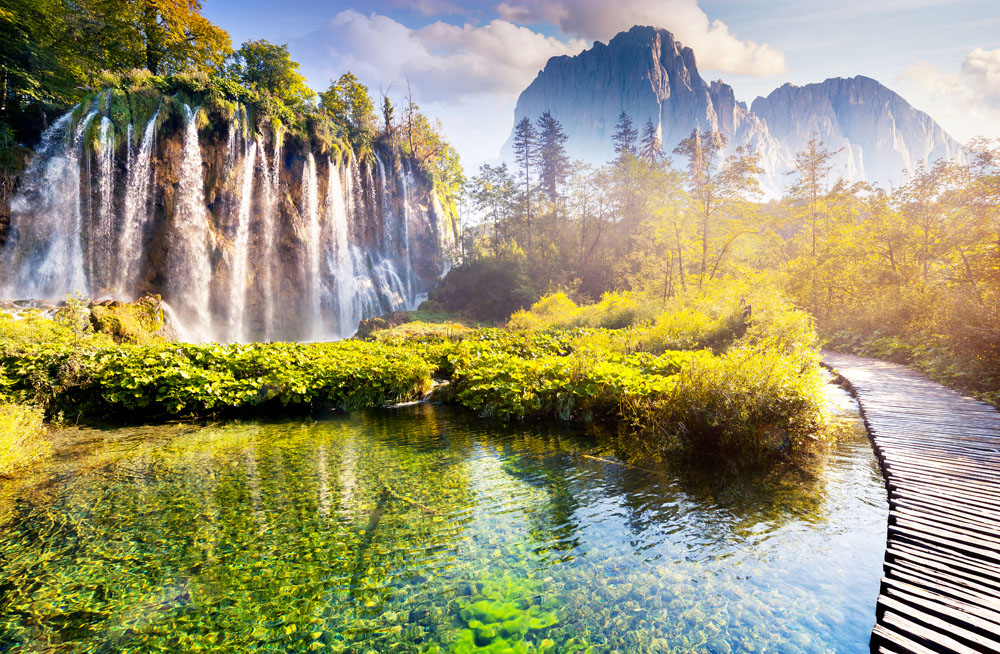
So, after reading all this, you should be convinced of the wonderful variety of attractions that make up this destination. Put travel to Croatia on your bucket list for sure.
For more information and travel ideas for a Croatia vacation, please visit us at www.goway.com.
Get more travel inspiration by email.
Subscribe
0 Comments

Get the latest travel trends & hear about the best deals on vacations around the world.
If you’re a Globetrotter, these are the newsletters for you!

